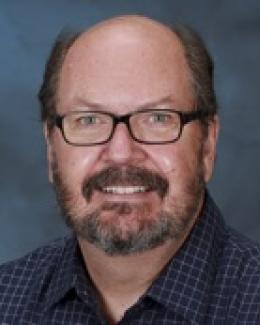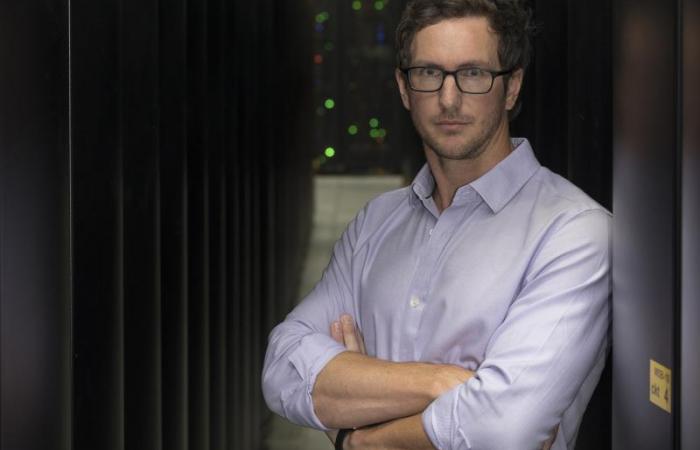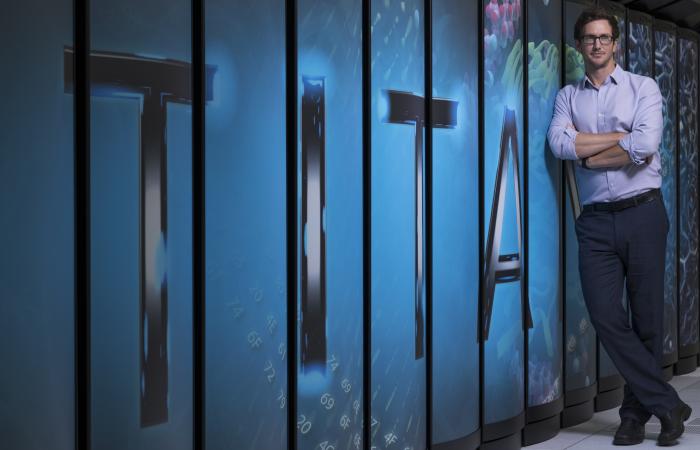A conversation with fusion scientist David Green
David Green learned an important lesson about hard work as he pursued a bachelor’s degree at the University of Newcastle in Australia. Namely, if he put in the effort to understand a difficult subject, that subject became less difficult and was sometimes even fun.
The subject at hand was physics, and Green was deciding whether he wanted to turn it into a career. The eventual answer was “yes,” and Green went on to earn his Ph.D. from the University of Newcastle and later landed at ORNL as a staff scientist.
His research focuses on developing the understanding required to enable fusion reactors, facilities that will generate electricity by heating a plasma to many times the temperature of the sun. Specifically, he uses computer simulation to study the magnetic confinement of fusion plasmas.
Green is one of four ORNL recipients of Early Career Research Program awards from DOE’s Of ce of Science. His award-winning proposal was titled “Scale-Bridging Simulation of Magnetically Confined Fusion Plasmas.” We asked him about his proposal and his choice of a career in science. This is an edited transcript.
Why do you simulate the magnetic confinement of fusion plasmas?
In magnetically confined fusion, we’re really trying to take the process that drives the sun and replicate it inside a laboratory vessel. As you can imagine, the environment in there is pretty extreme; just sticking a probe in to measure what’s going on doesn’t always work out. So we have a whole field of diagnosticians coming up with clever ways to figure out what is going on inside a fusion device.
Even with all that, we don’t have a complete picture of what’s happening in there. So that’s where computer simulation comes in. If we have a computer model—a set of equations that describe what happens—and we solve those equations, then we have all of the information within the assumptions of the model and the uncertainties of that calculation. We also have something happening in parallel—this increasing computational power that’s available—here we have massive supercomputers, but I’m sure everybody’s familiar with computing power continuing to go up. What that translates to for fusion and computational physics in general is removing more and more of the assumptions you have in your model, so the computer model gets closer and closer to reality. So the simulations are providing a lot of information that you might not be able to get at experimentally, which is why we simulate the fusion environment. And I think simulation now has become one of the key thrusts that are required to advance fusion.
What do you hope to achieve with your Early Career award project?
The Early Career award is focused on solving one aspect of the computer simulation problem. A fusion plasma is what we call a multiscale system. It has spatial scales from the micron or smaller level up to a several-cubic-meter level. Those physics scales can interact with each other. The spatial part of that—small and large scales—is something we’ve been able to solve with computer simulation for a while. You simply parallelize the problem. You take a large computer, and you say one node of that computer works on one piece of the problem and another node works on another piece, and if you get a big enough computer, you can parallelize your way to a solution.
But a fusion plasma also has multiple timescales present. What that means is you have some really fast timescales— nanoseconds, microseconds—impacting things that happen at the observable timescales. We can’t just parallelize our way out of that like we can with the spatial problem. If you want to predict what happens at some future time, you needed to know what happened in the past. So it tends to be a serial process.
The Early Career project is looking at applying some new applied math techniques that allow us to incorporate the physics of the fast timescale into simulations of the observable timescales.
Why is this research important?
Fusion devices cost a lot to build. We’re still in the experimental stage, with multiple millions if not billion-dollar experiments; they take years to decades to build, depending on the scale. And with these large supercomputers we have here, there’s an allure of using a large computer to simulate the whole device, and then you might be able to look at alternate configurations. So trying to confine the plasma, we use a magnetic field or a magnetic bottle of a certain shape—you might want to investigate certain shapes. To do that experimentally would be cost-prohibitive. But doing that with a computer, if you had simulation capability, that would be something that you could do, hopefully in a cost-effective manner.
What attracted you to a career in science?
I like solving problems in general, the harder the better. It really wasn’t until the end of my undergraduate studies in physics that I realized that if you put in some effort to solve what may have come across originally as something that was just unsolvable, when you actually do spend the time to learn and propose solutions, irrespective of what the problem is, I get a great deal of satisfaction in solving those sorts of things.
What keeps me in science is the same thing. Working at a national lab, you have experts in just about everything. Any question you want to ask, there’s someone around who will know more about it than you will, so the scale of problems we can solve here is pretty fantastic. So for someone who enjoys solving problems, this is a good place to be.




